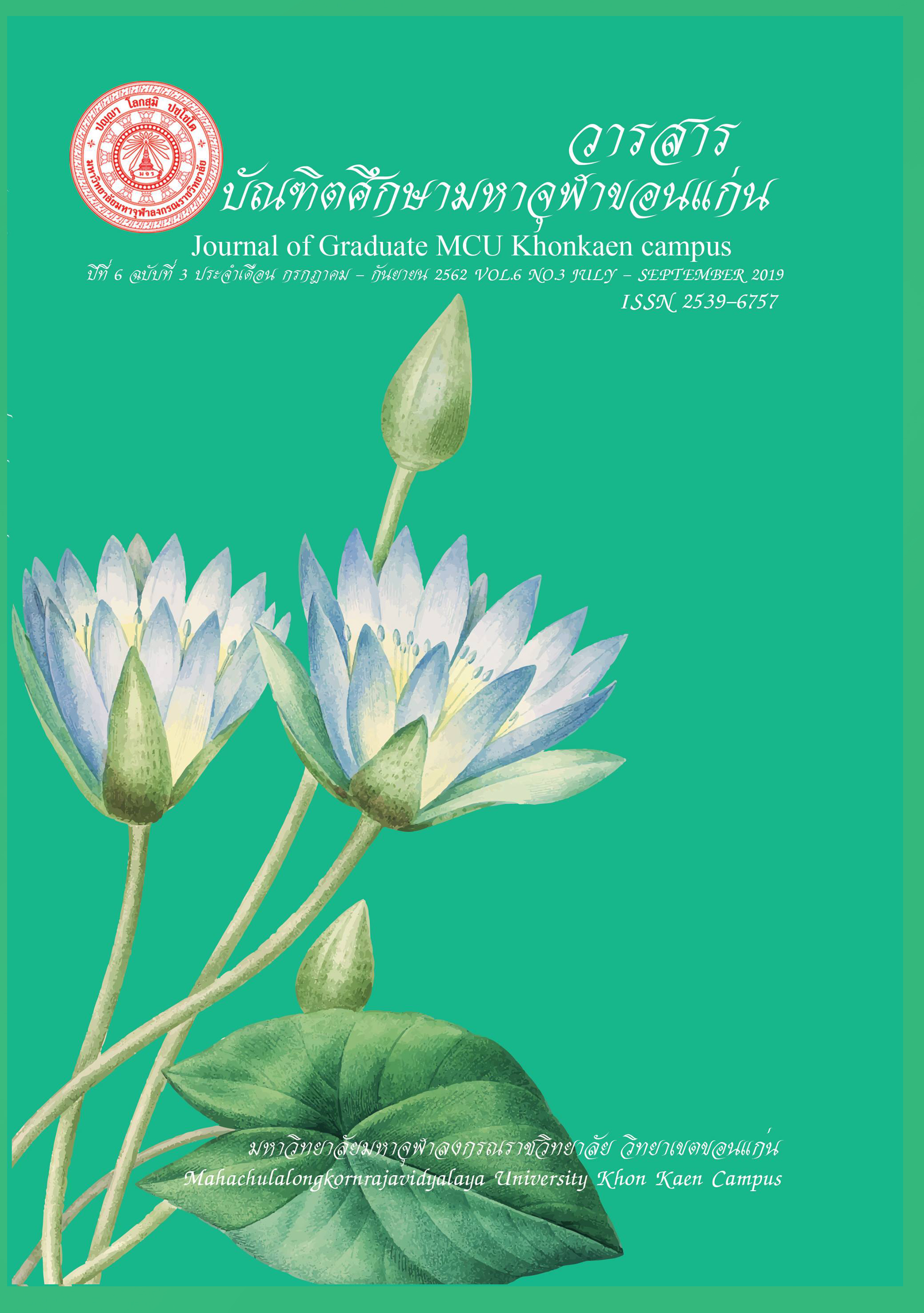The Misconceptions of Chinese Cultural of Thai Students
Main Article Content
Abstract
This study of the misconceptions of Thai students about Chinese culture was conducted to meet the following three objectives: 1) to study the literacy of Thai students about Chinese culture; 2) to study the misconceptions of Thai students about Chinese culture and 3)to study guidelines for managing Chinese cultural curriculum in Thai schools. The study was a survey with data collection from responses on questionnaires. The sample was composed of 88 Grade 6 students with basic knowledge about the Chinese language. Data was analyzed with descriptive statistics.According to the findings, the students had moderate overall literacy about Chinese culture. The dimension of Chinese culture with the highest literacy by students was Chinese food. This was followed by Chinese etiquette. Overall, the findings revealed that 80.68 percent of the students had high scores for misconceptions about Chinese culture, while 36.1 percent of the study had accurate conceptions, 27 percent of the students had misconceptions and 29.2 percent of the students had lost cultural conceptions about Chinese culture. In order to enable in-depth learning and understanding about Chinese culture. The students proposed that activities should be inserted into lessons such as watching movies, watching documentaries and taking field trips to various tourist sites. Furthermore, teachers should have lesson plans focused on building student understanding in order to prevent or minimize misconceptions about Chinese culture.
Article Details
References
Chalermchai, U. (2010). The Promotion of Chinese Language. Retrieved May 12, 2018, from https://www.moe.go.th/moe/th/news/detail.php?NewsID=14859&Key=hotnews
Changmuenwai, G. (1992). An Analysis of Misconceptions in Physics of MathayomSuksa Four Students, Bangkok Metropolis (Master’s thesis). Chulalongkorn University. Bangkok.
Chinese Studies Center. (2008). Thailand-China Cooperation in Chinese Language Teaching in Thailand. Bangkok: Institute of Asian Studies Chulalongkorn University.
Cholpilaiponk, E. (2002). Communication for Cultural Transmission of Chinese People in China Tow (Master’s thesis). Chulalongkorn University. Bangkok.
Li, J. M. (2013). Chinese Culture Perception of PratomSuksa 6 Students, SuandokSankamphang School, Chiang Mai Province (Master’s thesis). Chiang Mai University. Chiang Mai.
Makanong, U. (2011). Mathematics Process and Skill Test. Bangkok: Chulalongkorn University Press.
Manomaivibool, P. (2011). Chinese Communities in Thailand: Variety of Chinese Dialects. The Journal of the Royal Institute of Thailand, 36(4), 540-552.
Maytheekriengkai, C. (2016). The Transmission of Chinese Tradition to Cheesiness in Tarad Ban-Mai Community Chachoengsao (Master’s thesis). Burapha University. Chonburi.
Noysuwan, T., & Peng, B. (2013). A Comparison of Chinese Teaching with and without Chinese Culture. The 4thHatyai National and International Conference, 383-388.
Office of Chiang Mai University Demonstration School. (2016). History of School. Retrieved June 1, 2018, from https://www.satitcmu.ac.th/?option=mod_main
Singnoi, U. (2011).International Characteristics and Identity of Language and Culture: Facilities and Obstacles in Touching Language. Journal of Humanities, Naresuan University, 2(2), 1-15.
Suksamran, S. (1986). Religious beliefs and rituals of Chinese community. Bangkok: Chulalongkorn University Press.
Suwanjinda, P. &Renliang, L. (2016).The Cultural Adaption of Chinese-Thai: Case Study of Chinese-Thai at Chinatown Area. Proceeding in Social Development Administration and Management Strategy, 323-335.
Thanomjitra, V. (2015). The Relationship between Thai Television Drama Exposure with Cultural Values and Lifestyle of Laotians in Vientiane (Master’s thesis). Thammasat University. Pathumthani.
Wisedjinda, J., &Chitradub, S. (2018). Guidelines for Chinese Instruction in Upper Secondary Schools. Veidian E-Journal, Silpakorn University, 11(2), 445-455. Retrieved May 10, 2018, from https://tci-thaijo.org/index.php/Veridian-E-Journal/article/view/138823
Wylie, E. C. &Ciofalo, J. F. (2008). Supporting teachers’ use of individual diagnostic items.Retrieved October 22, 2018, from https://www.tcrecord.org/content. asp?contentid=15363
Xiao, L. F.&Xiao, D. (2013). Chinese English learner’s cognitive understanding of foreign cultures and attitudes. The Journal of Liberal Arts of Cruchantong University, 34(5). 40-52.
Yang, S., Gao, Y. & Ren, S. (2014). Study on the Reasons for the Lack of Mother Tongue Culture in College English Education and the Way of its Regaining. The Journal of China University of Mining andTechnology, 1(2), 89-100.

